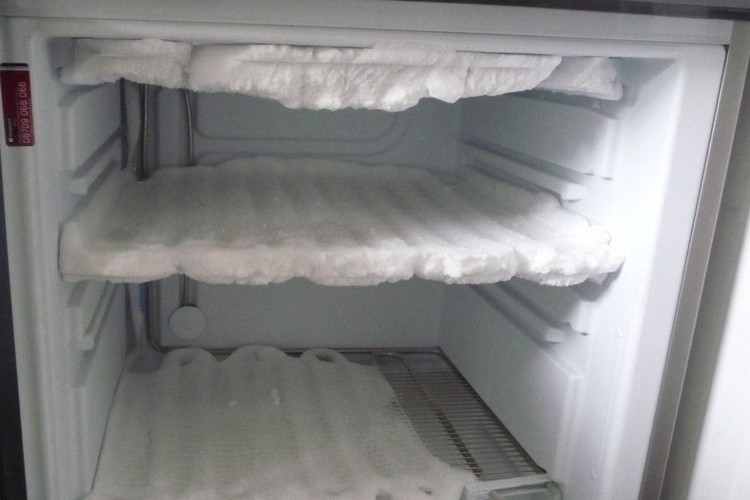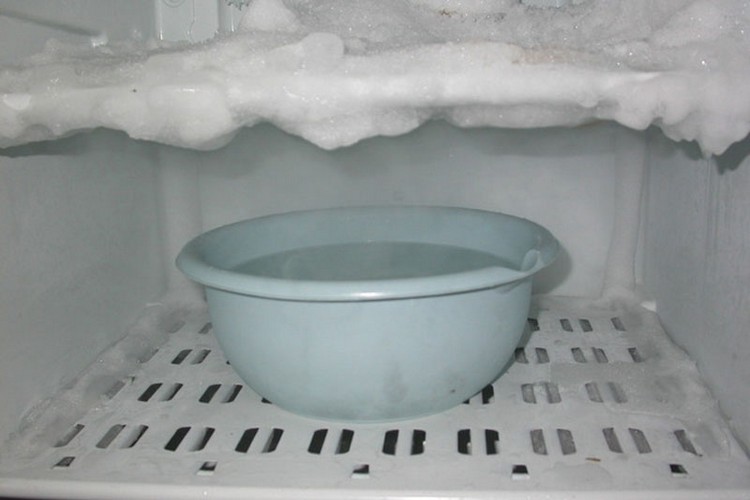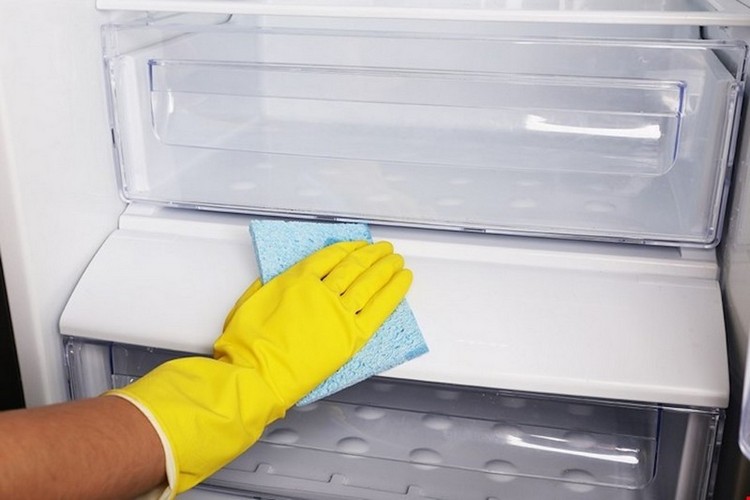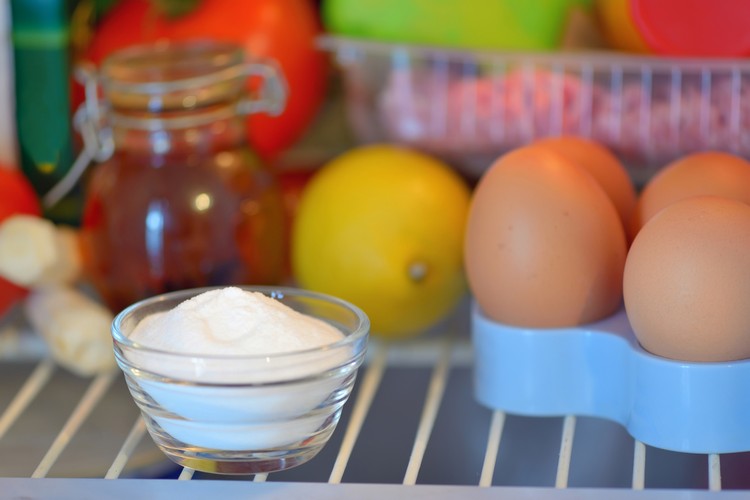How correctly to defrost the fridge, why it is necessary to do it and with what periodicity
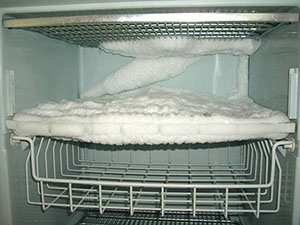 Long-term operation of the refrigerator provides comfort to its owners.
Long-term operation of the refrigerator provides comfort to its owners.
In order to improve the functionality of the device, regular sanitary and hygienic measures should be carried out. One such procedure is to clean the refrigerator of excess dirt and ice.
Defrosting the refrigerator is an indispensable item in the care of the device. Ignoring this procedure will result in functional problems, defects, and malfunctions.
Each manufacturer recommends a different degree of cleaning for your refrigerator. Be sure to look closely at the instructions before defrosting.
Table of Contents
Why to defrost the fridge
There may be several reasons for defrosting the fridge.
First of all, it is to get rid of excess ice on the walls of the refrigerator. In addition, regular defrosting of the refrigerator helps to avoid unpleasant odors and colonies of microorganisms that are resistant to low temperatures.
Defrosting your refrigerator extends the life of your product.
You should defrost such refrigerators:
- Those with No Frost, Frost Free, and Full No Frost systems. They are protected against ice buildup, but in spite of that they need periodic defrosting. Such freezing system is implemented in the device of many modern refrigerators of well-known brands - Indesit, Bosch, Stinol, Samsung, Liebherr, Atlant.
- Older models of No Frost. They are not fully protected against icing. Therefore, they must necessarily be cleaned.
- Without No Frost system. They are absolutely not protected against the formation of frost and ice. You should defrost them more often than other options.
Defrosting can take place at home or with the help of professional equipment.
The first option is preferable when we are talking about modern appliances. Professional defrosting is necessary when we are talking about old appliances and huge amounts of frozen ice or dirt.
Defrosting intervals
Each model needs its own defrosting intervals.
For example, Frost Free and Full No Frost appliances have less demanding requirements. They only need to be defrosted once a year. During defrosting not only the freezer compartment but also the walls of the fridge itself where the food is kept must be cleaned.
Older No Frost models should be cleaned at least once every 3 months. This helps to keep the functionality and prevent the appearance of trouble.
If we are talking about appliances without No Frost system, it is necessary to defrost them once a month.
How to defrost your refrigerator: step-by-step instructions
Defrosting a refrigerator with a chamber
As already mentioned, each model has its own peculiarities.
If you have a refrigerator with a chamber, follow these steps:
- Be sure to unplug the device from the outlet. After that, remove the contents of the refrigerator and freezer compartment. To keep the food in proper condition, wrap it in paper or newspaper and put it in a cold place. It is ideal if you defrost in the fall or winter, because this way you can take the food outside. If defrosting in summer, you can put the food under the air conditioner and wrap it tightly with a cloth.
- To defrost the freezer quickly, heat water and put a pan of hot liquid inside. Close the door and wait 10-15 minutes for the ice to melt. Then you can remove the thawed ice. To do this, use a scraper and a knife. Also, if the ice pieces come off easily, you can remove them with your hands.
- Cleaning the chamber should take place after total removal of the ice. Take a sponge and soap solution (dishwashing detergent will do). Thoroughly wipe the walls, then remove the foam and wipe the chamber dry.
- After cleaning the chamber, do the same with the refrigerator itself.
- Put the food in its place, and connect the power. The technique will gradually gain cold, the desired temperature will be set in about 4-6 hours.
As you can notice, the procedure of cleaning the two-chamber refrigerator does not take much time and is quite simple. It is important to do it in time.
Is it necessary to defrost No Frost fridge?
There is an opinion that refrigerators of such system are self-defrosting. Indeed, the instructions from the manufacturer of refrigerators with zero frost state that defrosting of such a device is not required.
However, in some cases, frost can settle on the device, so it is necessary to clean it. In the case of prolonged use, the system can fail, due to which ice and frozen pieces of snow are present on the walls.
The frequency with which you need to defrost or wash such a refrigerator is once a year.
The stages of defrosting are the same as in the previous paragraph, but in this case you can remove the refrigerator immediately, without waiting for the ice to melt.
How to preserve food while defrosting
If you have responsive neighbors who can hold food for a while - just fine. But otherwise, you need somewhere to put your food to keep it from spoiling.
Here are a few popular ways to keep food fresh:
- If defrosting takes place in winter, take the food outside. Wrap them in a cotton cloth beforehand to avoid dust particles.
- Summer defrosting requires special preparation. If you have a separate freezer at home, you can move the food there. If you don't have one, wrap the food tightly in paper (you can use wrapping or food-grade paper) or a cotton towel. You can also cover the food with jars of ice that you remove from the freezer.
- Use a thermal bag. If the amount of food is small, you can put everything in a thermal bag. It will reliably protect the food from heat.
Can you wash a plugged-in refrigerator?
Many people wonder if they can wash their refrigerator without unplugging it. The answer to this question is: unfortunately, any appliance must be unplugged before wet cleaning.
The fact is that water is an excellent conductor of electricity. Touching the wires while the refrigerator is on is fraught with bad consequences.
Also, when the door is open, the radiator is overloaded. The warm air that enters inside contributes to temperature disturbances.
Consequently, the refrigerator runs nonstop and wears out much faster. This leads to problems during the subsequent cooling of the food.
In addition, the warm air creates condensation, which negatively affects the entire structure of the system.
The efficiency of the refrigerator is determined by the degree to which it is hermetically sealed. The more hermetically sealed the device, the better its performance. Condensate collects in the trays, forming a specific "coat" of ice and snow. This seriously impairs the operation of the refrigerator and accelerates its wear and tear.
Cleaning your refrigerator after defrosting
When cleaning your refrigerator, do not use overly aggressive agents, or they may corrode the parts of the device.
Also, each type of dirt requires a certain degree of cleaning and different agents.
Mold
If you notice mold on your refrigerator, take baking soda and vinegar solution. Mix everything in a 1:2 ratio (one part baking soda and two parts vinegar) and moisten a cotton towel with this liquid.
Gently wipe the surface from the inside. Clean the rubber lining thoroughly. Leave the refrigerator open to allow the product to properly clean the surface.
If you do not have vinegar, you can use hydrogen peroxide. However, this option will only work for those who have a white refrigerator. In other cases, there will be a bleaching effect, and the colored surface will become lighter.
Grease
Many dishwashing detergents are excellent for removing grease.
You can also take ammonia and toothpaste, mix them in equal proportions and gently wipe the greasy areas. This mixture will also eliminate unpleasant odors and prevent the appearance of pathogenic bacteria.
Rust
Corrosion and yellowness are perfectly washable with ethyl alcohol or a three percent hydrogen peroxide solution. Use absorbent cotton, moisten it with one of these liquids and wipe the dirt on the spot without pressing the wool too hard.
Allow the areas to dry and then rinse the surface with plain, warm water.
Glue
It sometimes happens that adhesive residue from manufacturing adhesives can remain on a surface. There are special products that remove glue, but they are not always on hand.
Sometimes a regular eraser, which all schoolchildren use, will help.
You can also remove glue residue with a hair dryer. Just moisten the areas and point a hot hair dryer there. This will soften the glue and you can easily remove it with a wet or dry cloth. If the procedure fails, repeat it again.
After cleaning any stains, leave the refrigerator to air out for at least an hour. This way, the spots that have not been wiped completely will dry faster and your refrigerator will function better.
While the inner casing is drying, you can clean the outside of the unit. A microfiber cloth or a cloth soaked in a weak solution of soapy water is suitable for this purpose.
Rules of operation of the refrigerator
Alas, not everyone adheres to the correct rules of refrigerator operation.
When using the device, such factors should be taken into account:
- The temperature of the room in which the equipment is located. It should not be succumbed to too high or low degrees. The optimal temperature is a range of +10 to +32 degrees Celsius. In other cases, the device may be subject to wear and tear, thereby shortening the life of the device.
- Humidity. Humidity should be at least 75% degrees Celsius.
If you have just purchased a refrigerator, pay attention to its transportation.
The equipment can only be transported vertically. This is because in this case there is a risk of motor oil overflowing into the circuit, which will lead to clogging of capillary pipes.
That is, immediately after purchase you will face the first trouble. If you can not put the refrigerator straight, then make sure that at least the position of the compressor tube is vertical.
Do not place your refrigerator near gas stoves or electric stoves. The ideal place to place the unit is a place that is not exposed to sunlight.
For more efficient use, wet clean every month and defrost the freezer as needed. Also, each manufacturer specifies the frequency of general cleanings, so pay attention to the instructions.
To eliminate unpleasant odors, you can put small containers of salt inside. It will perfectly absorb even the strongest odors.
During operation, try not to put plates with warm food, as this will cause condensation. Leave space between items, and do not lean food against the back of the refrigerator. This way you will not provoke clogging of the drain holes.
You can conclude that taking care of your refrigerator is an important point in the operation of the appliance. If you clean the equipment regularly, doing it qualitatively, your product will serve you for a long period of time.
Useful video
To find out how to correctly defrost your fridge and how much time it will take you, watch this video:



